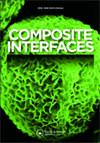基于DIC和FEMU的HTPB粘接界面宏微观损伤分析及参数反演
IF 2.4
4区 材料科学
Q3 MATERIALS SCIENCE, COMPOSITES
引用次数: 1
摘要
摘要:为了实现外载荷作用下HTPB复合固体推进剂结构完整性和损伤演化的定量分析,对宏观矩形试样和微观试样进行了加载破坏实验,并利用数字图像相关技术(DIC)对试样感兴趣区域(ROI)应变演化过程进行了数值分析。同时,借助有限元模型更新(FEMU)方法,结合自适应粒子群优化(APSO)、反向传播(BP)和Hooke-Jeeves算法对试件的力学参数和黏聚参数进行了反演,从微观角度实现了推进剂损伤断裂全过程的模拟。结果表明,抑制推进剂/衬垫界面的脱粘是保持结构完整性的关键。它开始于推进剂一侧的损坏和断裂。扫描电镜(SEM)原位动态拉伸试验表明,在应变为27.368%时出现初始损伤,当应变达到43.276%时,贯通型裂纹沿界面扩展。此外,利用组合优化算法,可在100次完整计算中实现分三类的16个参数的全局最优反演,将最优目标函数值降至0.0251,并辅助有限元计算实现对实验过程的定量分析和精确模拟。图形抽象本文章由计算机程序翻译,如有差异,请以英文原文为准。
Macro and micro damage analysis and parameter inversion of HTPB adhesive Interface based on DIC and FEMU
ABSTRACT In order to realize the quantitative analysis of the structural integrity and damage evolution of hydroxyl-terminated polybutadiene (HTPB) composite solid propellant under external load, the loading failure experiments were carried out on the macro rectangular specimen and the micro specimen, and the numerical analysis of the strain evolution process in the region of interest (ROI) of the specimen was carried out using digital image correlation (DIC). At the same time, with the help of finite element model updating (FEMU) method, the mechanical and cohesion parameters of the specimen were inversed using the combination of adaptive particle swarm optimization (APSO), back propagation (BP) and Hooke-Jeeves algorithm, and the simulation of the whole process of propellant damage and fracture was realized from the microscopic point of view. The results show that inhibiting the debonding of propellant/liner interface is the key to maintain the structural integrity. It starts with the damage and fracture of the propellant side. A scanning electron microscope (SEM) in-situ dynamic tensile test shows that the initial damage occurs at the strain of 27.368%, and the through-type crack propagates along the interface when the strain reaches 43.276%. In addition, the use of combinatorial optimization algorithm can realize the global optimal inversion of 16 parameters divided into three types in 100 complete calculations, reduce the optimal objective function value to 0.0251, and assist the finite element calculation to realize the quantitative analysis and accurate simulation of the experimental process. GRAPHICAL ABSTRACT
求助全文
通过发布文献求助,成功后即可免费获取论文全文。
去求助
来源期刊

Composite Interfaces
工程技术-材料科学:复合
CiteScore
5.00
自引率
3.80%
发文量
58
审稿时长
3 months
期刊介绍:
Composite Interfaces publishes interdisciplinary scientific and engineering research articles on composite interfaces/interphases and their related phenomena. Presenting new concepts for the fundamental understanding of composite interface study, the journal balances interest in chemistry, physical properties, mechanical properties, molecular structures, characterization techniques and theories.
Composite Interfaces covers a wide range of topics including - but not restricted to:
-surface treatment of reinforcing fibers and fillers-
effect of interface structure on mechanical properties, physical properties, curing and rheology-
coupling agents-
synthesis of matrices designed to promote adhesion-
molecular and atomic characterization of interfaces-
interfacial morphology-
dynamic mechanical study of interphases-
interfacial compatibilization-
adsorption-
tribology-
composites with organic, inorganic and metallic materials-
composites applied to aerospace, automotive, appliances, electronics, construction, marine, optical and biomedical fields
 求助内容:
求助内容: 应助结果提醒方式:
应助结果提醒方式:


